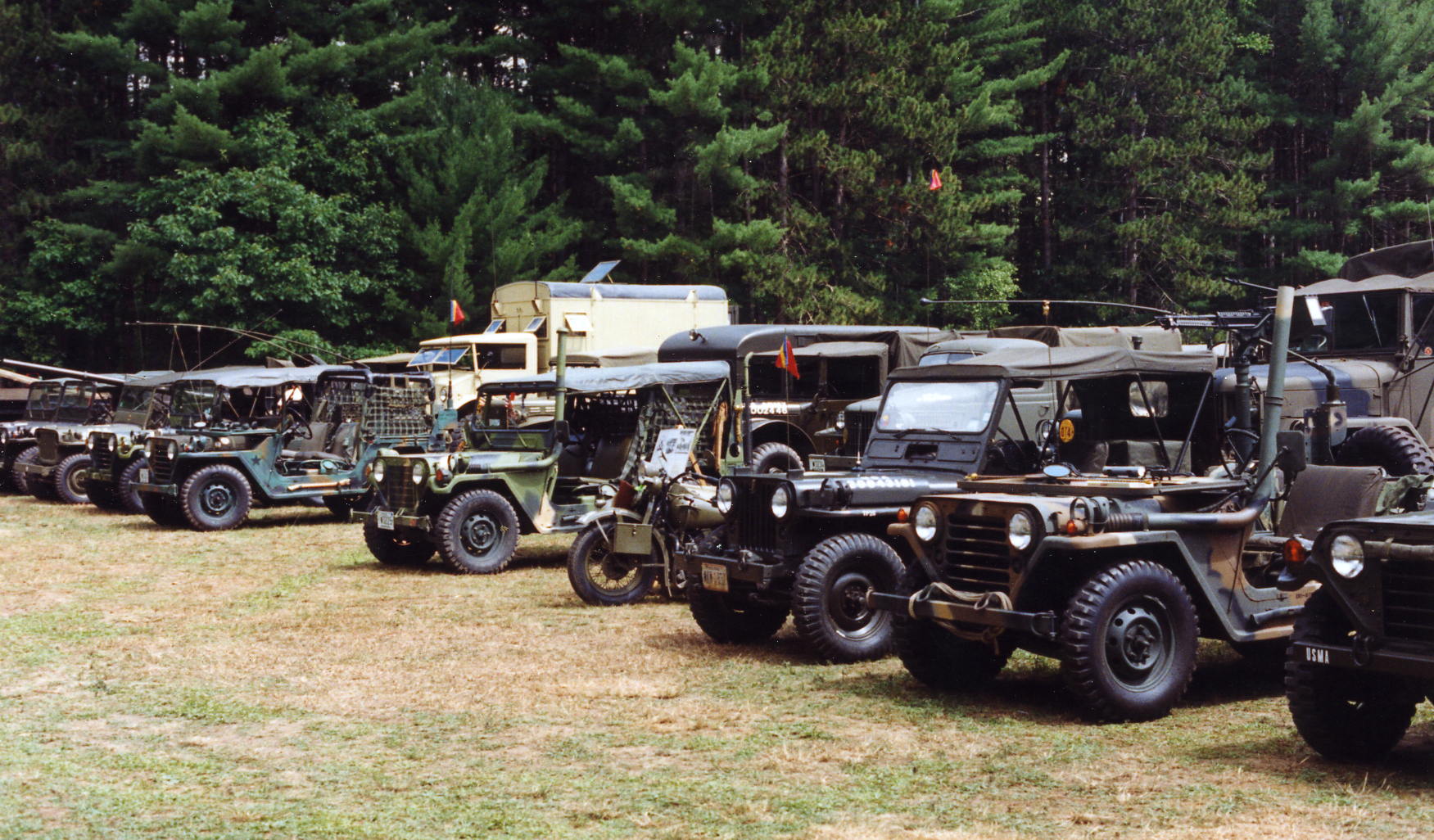A gallery of photos follows:
The farm workhorse. The CJ2A that started it all, on one of the farm roads to the wood lot where it spent a lot of time. It carried me over to fell the trees and cut and split the wood and then went back the next year to pick up the dried wood and haul it to the barn yard in its trailer. It also was the vehicle the kids first learned to drive, off the highway on the roads around the farm. And it did some pretty impressive acrobatics in the sand pits at the back of the farm. In this picture it is in its final livery, the home done camouflage paint job done in the farmyard. The jeep was a simple beast, without any pollution control, and had the fuel tank mounted behind the driver on the rear bench seat. In this picture, you can see the chain saw case in the back.
The only things connecting the engine to the body were the fuel line, the exhaust pipe, the throttle and the choke. I once changed a ring gear on this jeep in two hours, pulling the engine in the workspace by the side of the barn and pre-heating the ring gear on a charcoal grill before heating more with a torch and dropping it into place on the flywheel. And grilled some chicken for lunch on the charcoal.
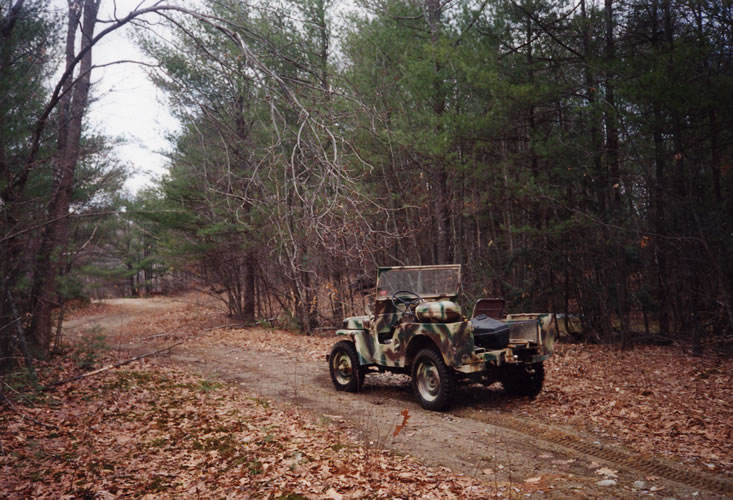
The first photo is of the M-38 at the beginning of restoration, with the body off. I sand-blasted the frame and cleaned off all the "extras" added through the years. Same with the body. As I cleand up the body, I found that the original olive-drab paint layer had been the old WW2 flat finish paint, which had been over-painted with the post-war satin finish paint. As I started working on it, the neighbor who had sold it to me dropped by and, when he saw what I was doing, he asked if I wanted the windshield, too. It was half-buried in the manure pile behind his barn, but in the end, cleaned up pretty well. The second photo shows the M-38 completed. About $8-10,000 in restoration costs over several years. The red jeep in the background is the CJ2-A "farm jeep" before the camouflage paint job.
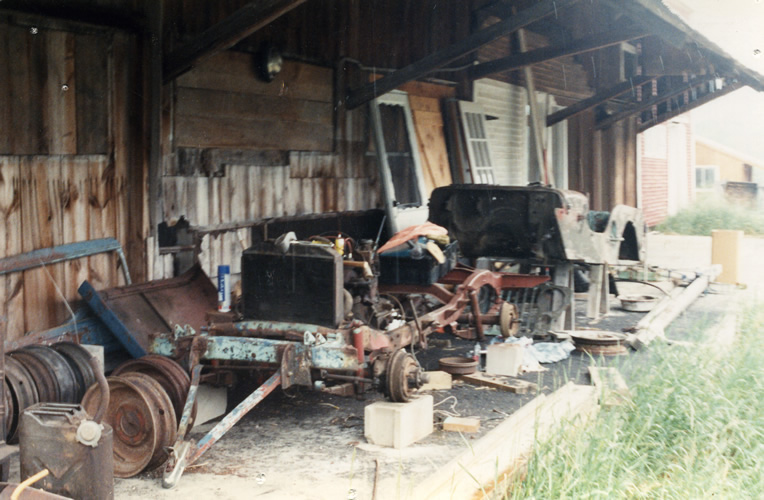

Here's a shot of the painting of the farm jeep. I gave it an all-over coat of a sand color, then the kids went to work with several colors of greens and browns to give the jeep its final color scheme.
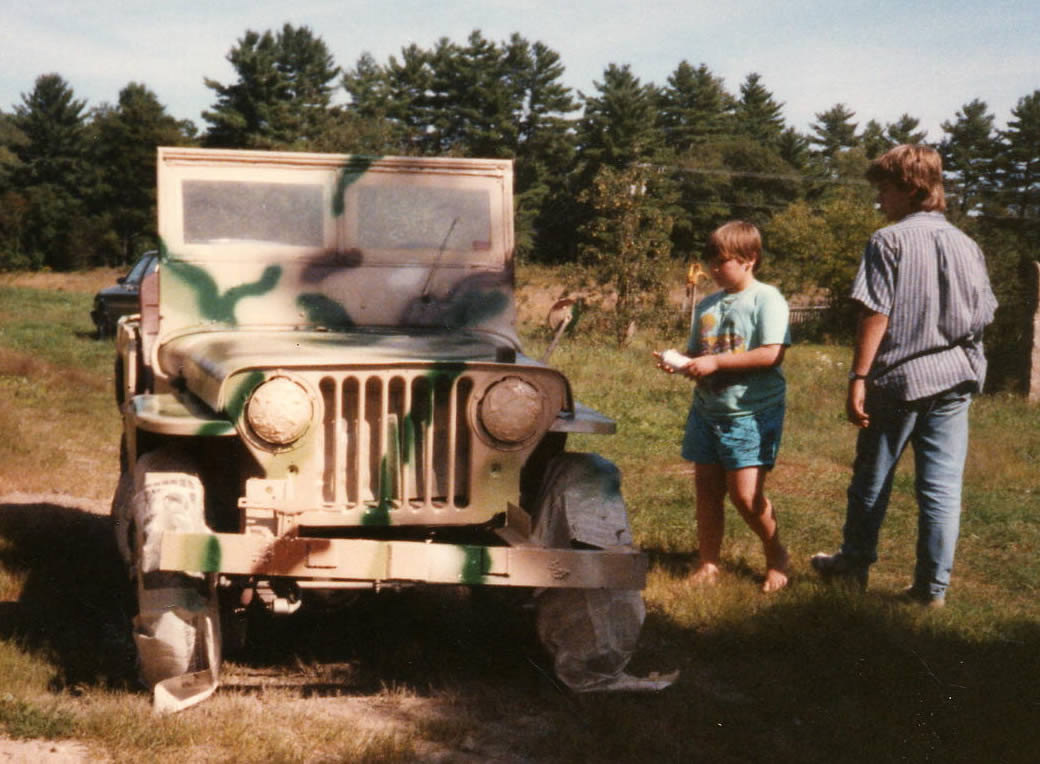
This is the M-170 - a CJ-6, basically a CJ-5 with longer wheelbase, but the military version. The "M" designation indicates it is compatible with NATO standards and has the 24 volt electrical system. This particular vehicle was an ambulance, and could carry up to four litters in the back.
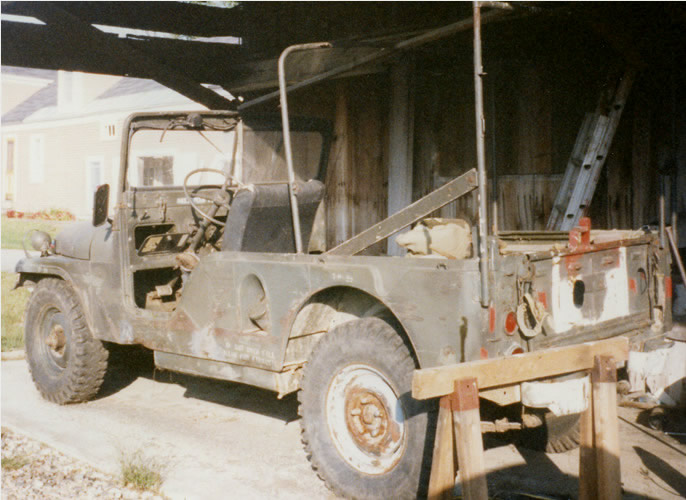
The M-725 was also an ambulance built on the 1 1/4 ton Kaiser jeep frame, with a six cylinder 130 horsepower engine. It was a better over-the-road vehicle than the M-38, but still pretty rough. I took and EMT friend for a ride in it once, and her comment was that "Ambulances have certainly improved since this was built". It was a good vehicle to take to a rally however, and it could easily tow the M-38. It was a primitive sort of camper, with the litter racks making four "bunks" in the back.
The first picture shows the M-725 when it arrived at the farm, still in Air Force color. The second shows it after re-painting. The third picture shows the two restored vehicles ready to head out to a rally.
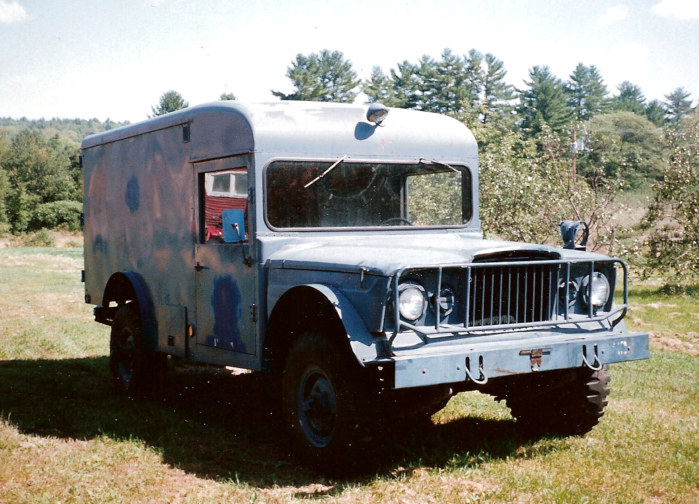
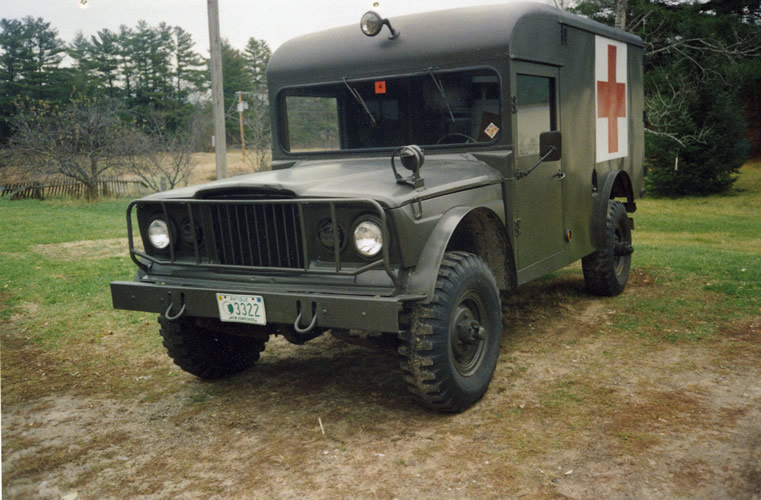
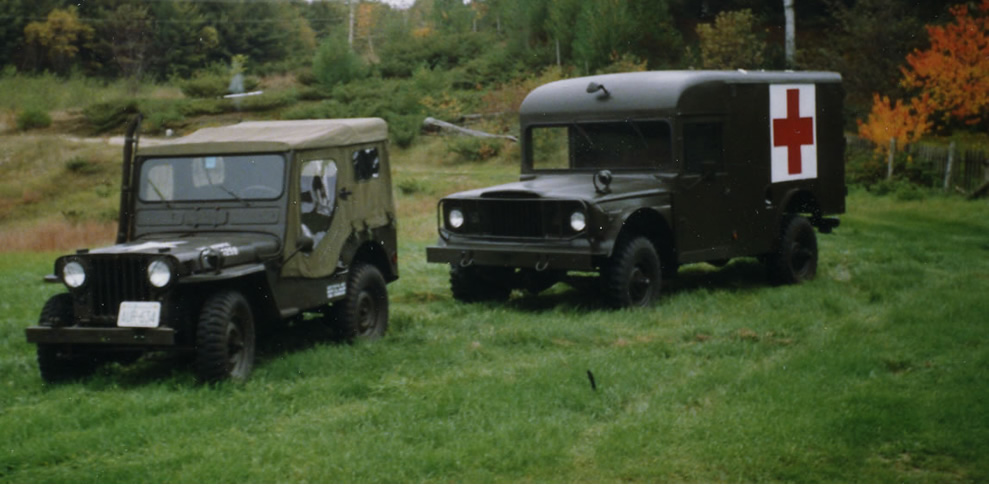
The second CJ2-A. This one was road-worthy and registered. I started to restore it and we took it along to Oklahoma, where it was given to a friend, who had always wanted a jeep.
The second picture shows the two CJ2-As parked by the barn, with the blue one undergoing some engine work.

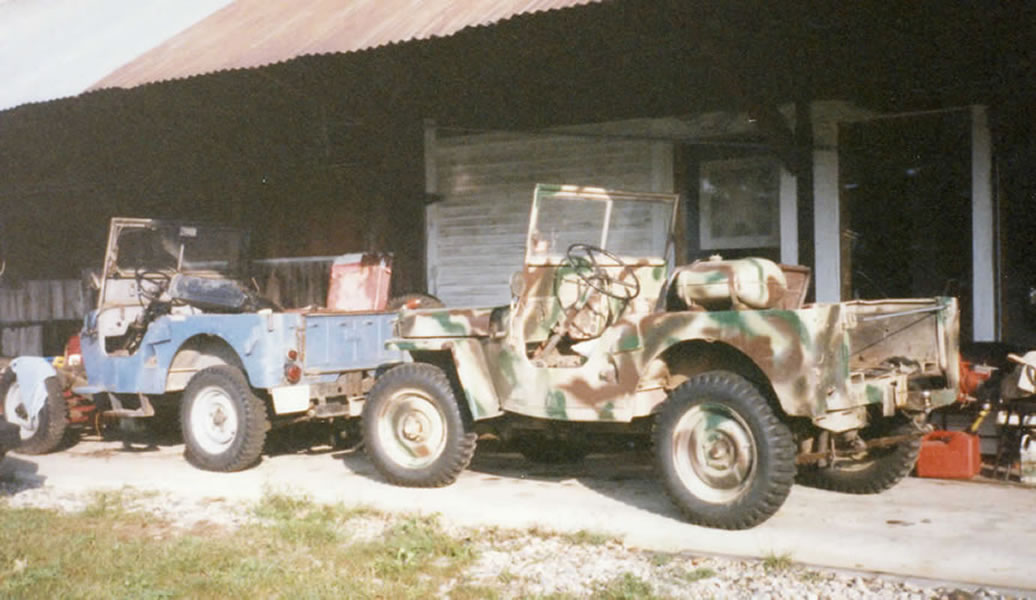
Here are a couple of photos of the south side of the barn with various jeeps in various states of repair, restoration, maintenance, or just resting. We called it the "dis-assembly line".
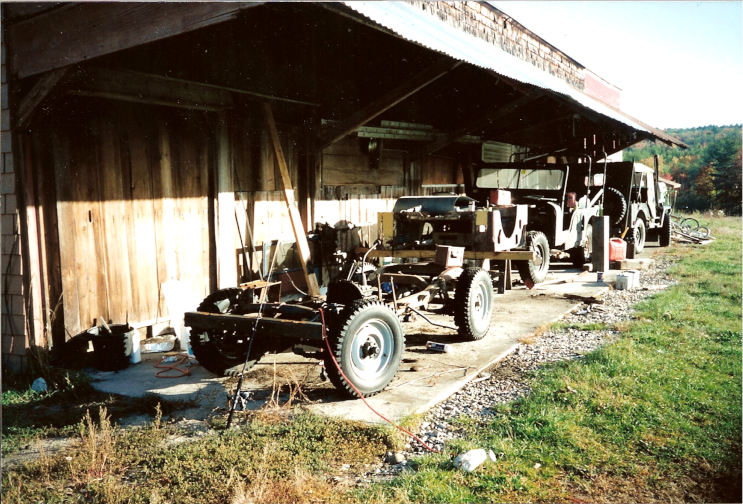
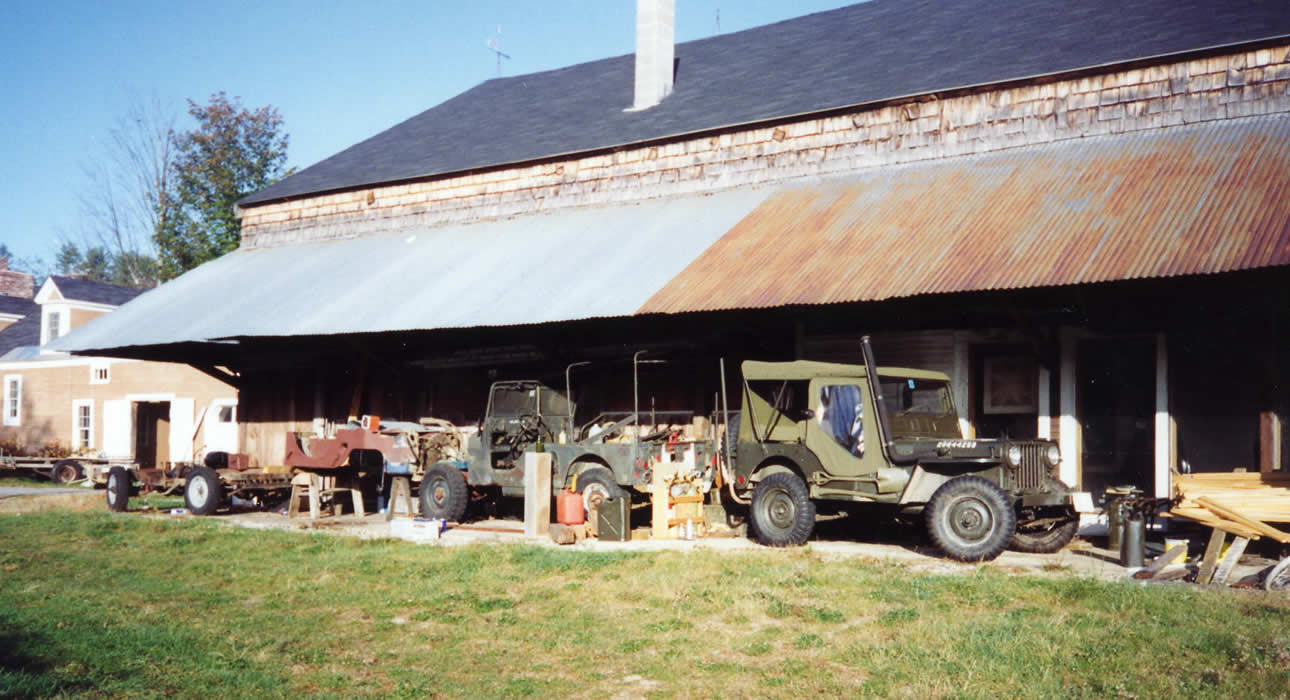
One of the better things about the zany hobby of restoring old military vehicles is that you get to meet other people with similar interests or obsessions. In our case, we met up with the Merrimack Valley Military Vehicles Collectors Club and went to numerous rallies, trail rides, and parades with that group over several years. They held a big rally every year at Weare, NH. The first picture shows a few of the vehicles at the Weare Rally in 1993 and the second photo is of the club and family members on a fall trail ride.
